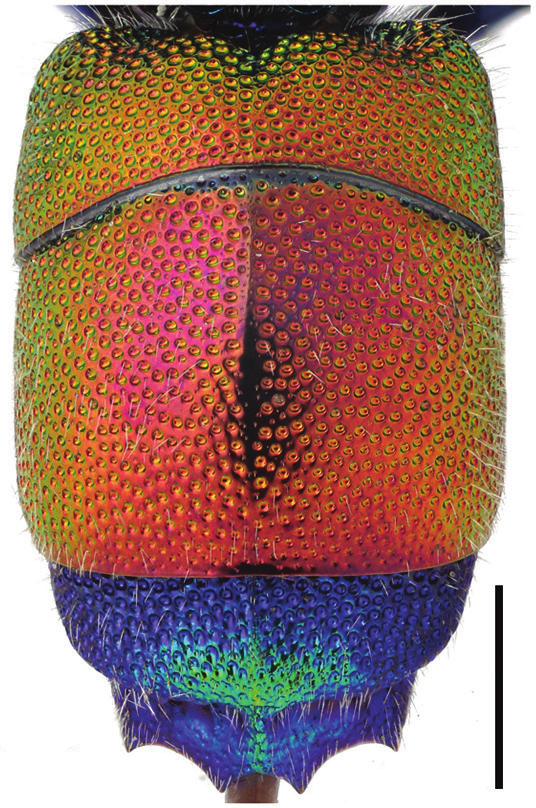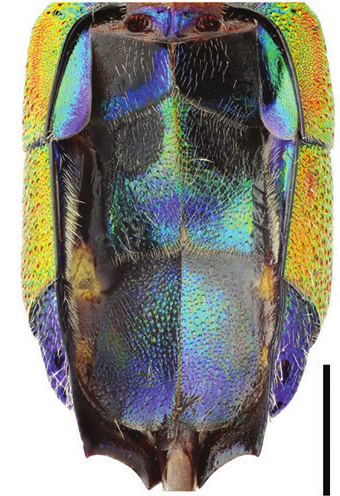Chrysis splendidula
- Innhold
- Diagnosis
- Distribution
- Biology
Diagnosis
Figure 95
Metasoma, dorsal view: C. splendidula ♀. Scale 1 mm.
Figure 114
Metasoma, ventral view: C. splendidula ♀. Scale 1 mm.
Length 5–8 mm.
The colouration is similar to C. rutilans, as the head, mesosoma and T3 are green, blue, or partially black, whereas T1 and T2 are golden red. Compared to C. rutilans, the body is more robust and the punctation of T2 is coarser (Fig. 95). T2 has a distinct polished longitudinal keel medially and its posterior margin is narrowly raised (Fig. 95). The black spots of S2 are shorter (Fig. 114) and the head is broader than in C. rutilans.
Distribution
Latvia. Very rare. Only three records are known from eastern and central Latvia.
Trans-Palearctic: Europe, central Asia, Japan and Korea (Linsenmaier 1997, Kurzenko and Lelej 2007).
Biology
Habitat: sparsely vegetated sandy areas, such as sand pits (Hoop 1971). Adults occasionally visit flowers of Apiaceae, Asteraceae and Euphorbiaceae (Linsenmaier 1997, Rosa 2004, 2006).
Flight period: July and early August.
Host: Eumenes coarctatus (Linnaeus) (Vespidae) (Martynova and Fateryga 2015). Possibly also Eumenes mediterraneus Kriechbaumer and E. pomiformis (Fabricius) (du Buysson 1895, Ferton 1910, Martynova and Fateryga 2015) Other host species reported for C. splendidula, such as Gymnomerus laevipes (Shuckard), Symmorphus allobrogus (Saussure) (Vespidae), Trypoxylon figulus (Linnaeus) (Crabronidae) and Osmia andrenoides Spinola (Megachilidae), concern actually C. rutilans or are unreliable (Martynova and Fateryga 2015).

